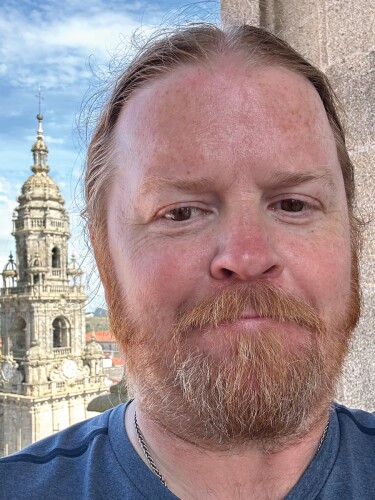Phil Broughton keeps laboratories safe
DOI: 10.1063/pt.qiqd.knhl
“What can physicists do?
Phil Broughton
Laser safety officer, University of California, Berkeley
BS, physics, University of California, Santa Cruz, 1998
MS, health physics, Oregon State University, 2008

(Photo by Gabriel Mosher.)
What was your research focus for your master’s degree?
Radioecology: how radioactive materials propagate through the environment via food chains, groundwater, and soil.
What were you looking for in a job?
I got into lab safety because I was terrible at programming. I originally fell into it as an undergraduate working in an isotope geochemistry lab. After graduation, I was hired as a laser tech and then service engineer. I picked up safety roles until they became my entire job. But I wanted to learn at the ground level. I wanted to learn history and industrial knowledge, not just the ropes of how to do things.
Then, as a health and safety technician at Lawrence Livermore National Laboratory, I saw that to advance, I needed to get a higher degree. I wanted to work with ionizing radiation. I got my master’s in health physics very intentionally, while working full time. After four years at Livermore, and after I finished my degree, I moved to UC Berkeley in 2008.
What does your job involve?
I inspect labs. I look for radioactive contamination and make sure shielding is appropriate and that people have not altered setups. I check laser safety. I calibrate instruments. I spend a lot of time reviewing proposals and procedures for experimental design. I document problems and make sure researchers know where things go wrong—so it won’t happen again.
What do you like about your job?
It’s fun working with students. And I never know what I will do on any day. I love that.
How do you use your physics in your job?
In radiation safety and control, we have a good understanding of how ionizing radiation interacts with materials, biology, and the environment. That takes advantage of the breadth and flexibility that a physics degree fosters. And I use physical intuition for how things work and for doing the math and then checking if the answer makes sense.
Is there anything you’d like to add?
Among research physicists, there is some prejudice against safety roles: It’s not seen as real physics. But I like that as a physicist in a safety role, I am helping people make sure that their research succeeds and can continue.

